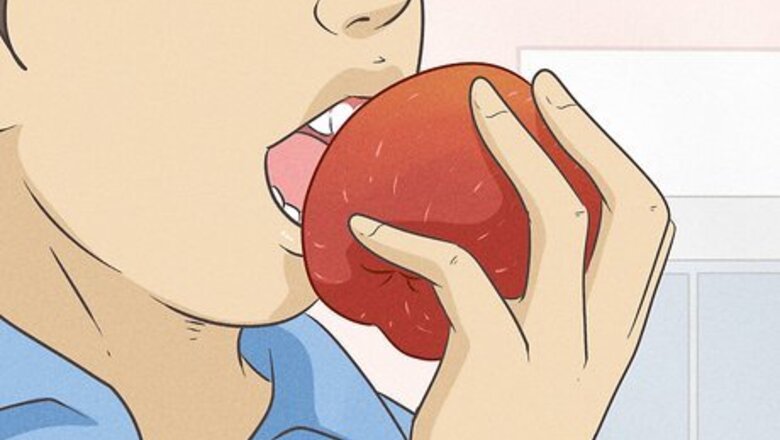
views
- Before pulling a tooth, it’s important to loosen it. Have your child eat crunchy foods, floss regularly, and wiggle the tooth as much as possible.
- Numb the gums around the loose tooth with ice or teething gel before pulling it to ensure your child doesn’t experience any pain.
- Use a piece of sterile gauze or tissue to get a better grip on the tooth before twisting and pulling it out.
Loosening a Tooth
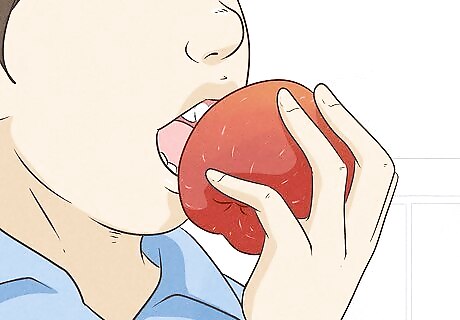
Eat crunchy foods. Chowing down on something hard and crunchy is an excellent way to loosen a tooth and help it come out without pain. Have your child chew on crunchy foods like apples, carrots, and celery to help their tooth come out faster. Start small and work up to the crunchiest foods to make sure the hard texture doesn’t cause pain. For instance, give them a firmer peach or pear first. If your child feels the tooth come loose while chewing, have them spit the food into a napkin and check for the tooth. Call your doctor or dentist if they accidentally swallow a tooth. There’s typically no cause to worry, but you may want to contact your dentist just in case.
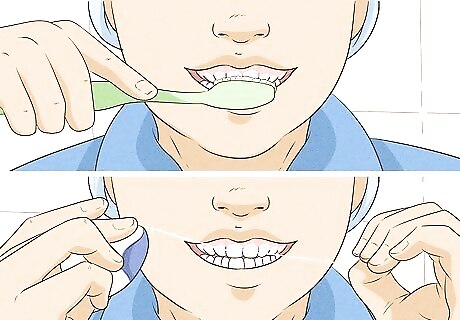
Brush and floss as usual. Regular brushing and flossing may help loosen a tooth and make it easier to pull out. Have your child focus on the area near the gumline around the loose tooth. Advise them to avoid brushing or flossing too hard—there shouldn’t be any pain. Aim to have your child brush and floss at least twice a day. To floss your teeth, use about 18 inches (46 cm) of floss and wind most of it around the middle finger of one hand and the rest around the middle finger of the other hand. Hold the floss between your thumb and your forefinger and guide it between the loose tooth and its neighbor teeth in a back-and-forth motion. For a better grip, use a flossing pick. This is an excellent option for children who struggle with holding a long piece of floss.

Wiggle the tooth. The looser the tooth is, the less pain your child will feel when you try to pull it out. Have your child use their tongue and clean fingers to loosen the tooth with a gentle wiggling motion throughout the day. Advise them to avoid pulling or pushing the tooth too hard, which may cause pain. If your child experiences extreme pain while gently wiggling a tooth, contact your dentist immediately, as this may be a sign of an infection or gum swelling.
Numbing & Pulling a Tooth
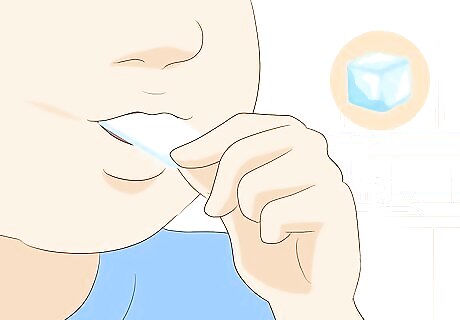
Suck on ice chips. Ice can help numb the gums attached to the tooth and prevent pain. Before you start wiggling or tugging on the tooth, consider having your child hold a piece of ice to the gums around it. Have your child suck on ice chips throughout the day for 10 minutes at a time to help relieve pain and soreness. Avoid sucking on ice chips repeatedly, taking breaks every 10 minutes or so; otherwise, the ice may damage the gum tissue. If your child is a picky eater, let them suck on an ice pop instead of ice chips. Just make sure they hold the popsicle over their loose tooth.
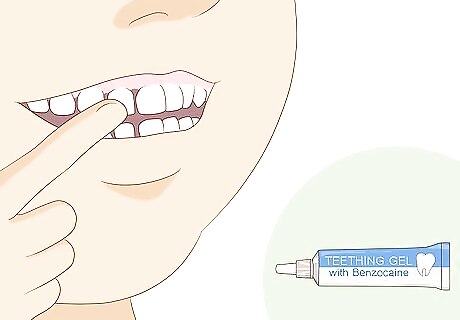
Use teething gel to numb the area. Numb the tooth socket with a topical anesthetic gel that contains benzocaine. While these products are designed to soothe teething pain in babies, they can also help soothe pain in children with loose teeth. Apply a bit of teething gel to the gums around the loose tooth before you pull it, following the instructions on the packaging. Teething gels are Orajel and Hyland’s are excellent choices and can be bought over-the-counter.
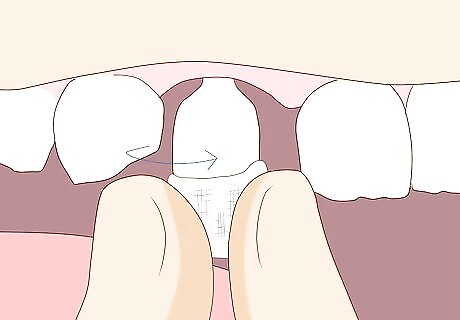
Grip the tooth with sterile gauze and twist gently. If you think the tooth is loose enough to come out, use a piece of sterile gauze to grip and twist it. The gauze gives you or your child a better hold on the tooth, making it easier to pull out. Do back-and-forth and left-to-right motions to twist the tooth free. This helps remove the existing tissue around the tooth, so it comes out easily. If the tooth doesn’t come out on the first try, replace the gauze with a new piece and try again (as long as there’s no pain). If pulling on the tooth hurts or it doesn’t budge when you apply light pressure, stop trying to pull it out and continue wiggling techniques (eating crunchy foods, brushing, flossing, etc.). If you don’t have sterile gauze, use a clean piece of paper towel or tissue instead.
Aftercare & Reducing Pain
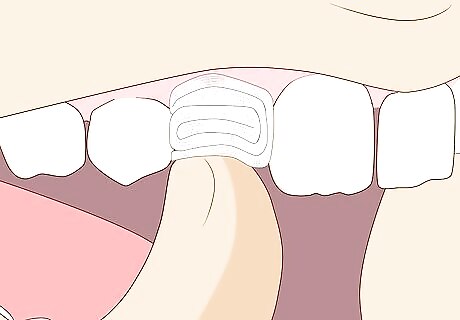
Apply pressure to the gums until the bleeding stops. Putting gentle pressure on your child’s gums with sterile gauze after pulling out a tooth can reduce pain and stop any bleeding that occurs. If your child’s gums hurt or bleed a little after the tooth is pulled, roll up a new piece of gauze and stick it in the empty space. Keep applying pressure until the bleeding stops, which is typically within a few minutes. Once the bleeding stops, check the gums for baby tooth fragments. If there are any, call your dentist as this could cause future dental problems. If your child’s gum bleeds profusely, contact your dentist.
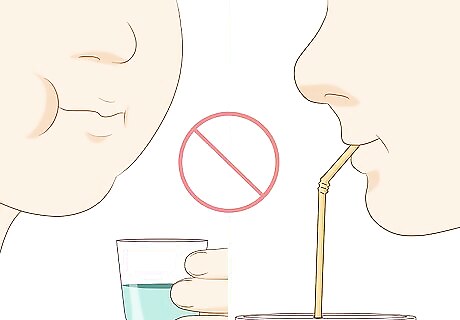
Keep mouthwash and straws away from your child for 24 hours. After a tooth is pulled, a blood clot will form in the tooth socket. This clot needs to remain in place so the area can heal properly. Avoid rinsing the mouth, drinking from a straw, or doing anything else that involves suction or vigorous rinsing for at least 24 hours. Avoid brushing or flossing the tooth socket or the area around it as well. Your child should still brush and floss their teeth, but leave the empty tooth socket alone and avoid vigorous swishing. To avoid any excess pain or soreness, feed your child soft, room-temperature foods for the first 2 days after pulling out their tooth.

Place a wet tea bag over the tooth socket. A wet tea bag may also help soothe sore and irritated gums after a tooth is pulled. Steep a tea bag in hot water for 3 to 5 minutes, then remove it from the water and let it cool. Wring the tea bag out and hold it against your child’s empty tooth socket. Green tea is the best to use, thanks to its antibacterial and healing properties.
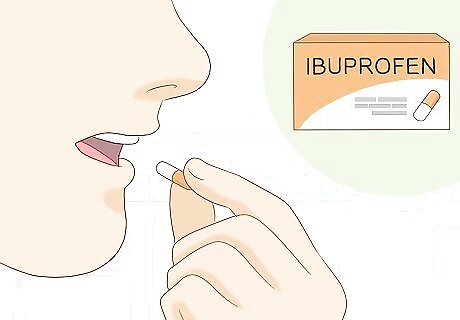
Give your child an over-the-counter pain reliever. If your child complains of pain in their mouth, consider giving them a pediatric painkiller. Children’s acetaminophen or ibuprofen may be enough to help ease their pain. Opt for a liquid form of medication if your child has a hard time chewing or swallowing pills. If you’re unsure if you should give your child a pain reliever, contact their pediatrician with any questions.

See a dentist if the tooth doesn’t come out. If the loose tooth is causing your child extreme pain or is stuck in their gums, call your dentist immediately. Intervention isn’t typically needed, but it may be required if a tooth doesn’t come out on its own. The dentist can use a bit of local anesthetic to help pry the stubborn tooth out so your child isn’t in any pain. In some cases, teeth may have a cyst or infection, like granuloma, at the end of the root. Dentists can professionally clean and remove the infection to prevent any further complications.




















Comments
0 comment